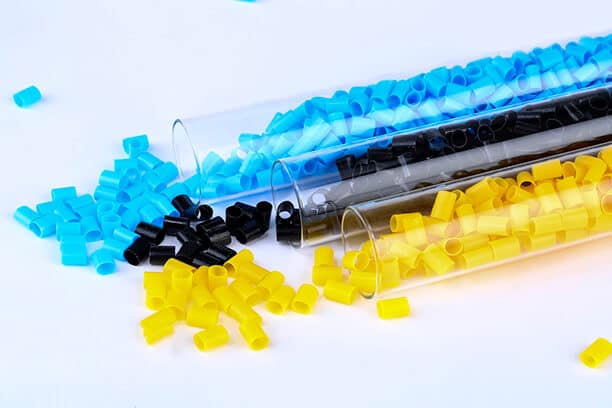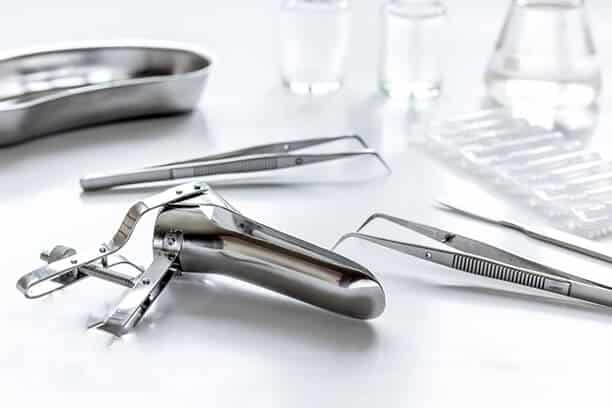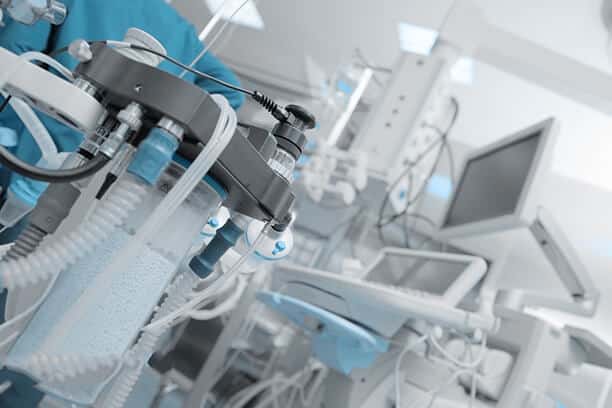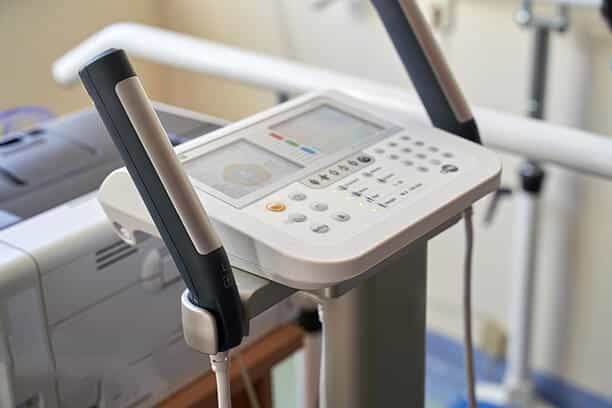With the global market for high-quality medical devices continually growing, there has been a significant advancement in medical plastic products. These products have become crucial components within the modern healthcare system, serving a necessary role. Medical plastic parts cover a broad range of devices, including test equipment, such as vials and beakers, as well as implants, surgical instruments, and catheters. The increasing utilization of plastics in the medical field can be attributed to their exceptional performance, lightweight nature, and cost-effectiveness.
In this guide, we will explore various aspects of medical-grade plastics, including common types, benefits in medical parts manufacturing, tips for optimizing the design process and manufacturing process, and considerations for preventing plastic failure and mitigating environmental stress cracking.
What Is A Medical-Grade Polymer?
When it comes to “medical-grade” polymers, nearly any resin can potentially be used in a medical application as long as it undergoes thorough characterization and meets appropriate consistency controls. This entails a comprehensive assessment of potential material risks to ensure their acceptability.
Once these materials are adequately documented, medical device manufacturers can confidently incorporate them into their designs and products to meet regulatory and application requirements. However, it’s important to note that the documentation process is specific to the material and formulation, and it represents a single instance in time. Any modifications to the material or formulation throughout the product’s lifespan, even within a complex supply chain, can invalidate previous approvals.
This is where “change control” becomes a significant and challenging aspect. Any alteration at any stage of the supply chain, whether it’s the production site, process, specification, quality system, or even minor ingredients, can potentially impact the material’s characterization.
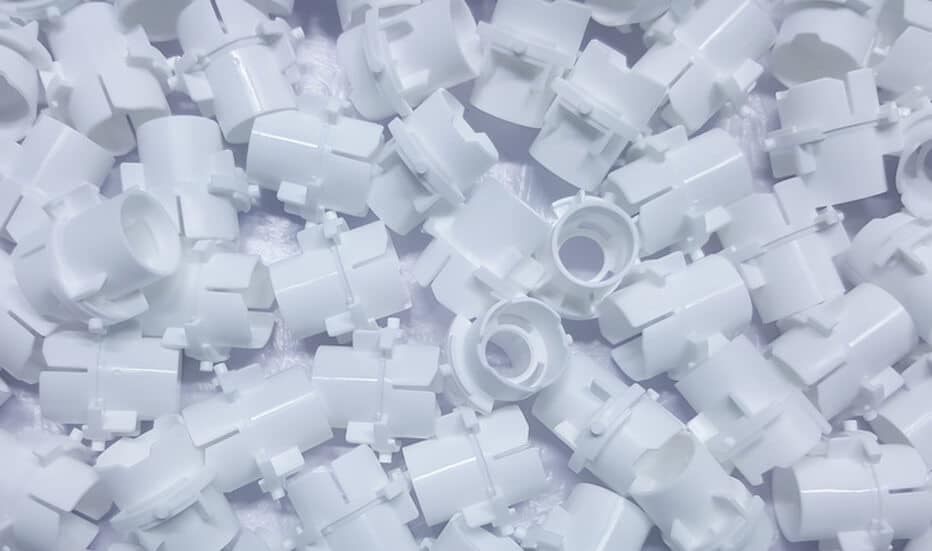
Common Medical Grade Plastics for Medical Applications
To meet the demands of the market, original equipment manufacturers (OEMs) of medical plastic products must carefully consider various factors, such as the wide range of medical applications, product durability, and biocompatibility. Equally important is ensuring that medical-grade plastic materials conform to regulatory standards worldwide. To guarantee the safety and efficacy of medical products, polymers used in medical devices generally consist of thermoplastic materials.
Here, we will explore some commonly used medical plastics for medical devices and their respective properties:
1. Polycarbonate (PC)
Polycarbonate (PC) is a type of thermoplastic polymer that contains carbonate groups in its chemical structure. It is widely recognized and utilized for its exceptional impact resistance and thermal resistance. Additionally, PC offers advantageous properties such as toughness, UV protection, durability, and favorable electrical and optical characteristics.
The medical industry particularly values polycarbonate due to its notable strength, excellent heat resistance, and compatibility with biological systems. Consequently, PC is extensively used in the manufacturing of medical components, including IV connectors utilized in renal dialysis and cardiac surgery procedures.
2. Polypropylene (PP)
This medical-grade plastic is commonly utilized in applications that require resistance to high temperatures. This is due to its ability to withstand extreme steam sterilization and maintain high durability during processing. Additionally, its recyclability and cost-effectiveness make it a favorable choice compared to other medical plastic polymers.
The versatility of polypropylene, allowing for easy forms of various shapes, along with its stability against solvents, acids, and bases, further enables its appeal and justifies its widespread usage. Consequently, many manufacturers rely on this type of plastic to produce non-absorbable sutures, prescription bottles, plastic containers, finger-joint prostheses, transparent bags, disposable syringes, connectors, and oxygenator membranes.
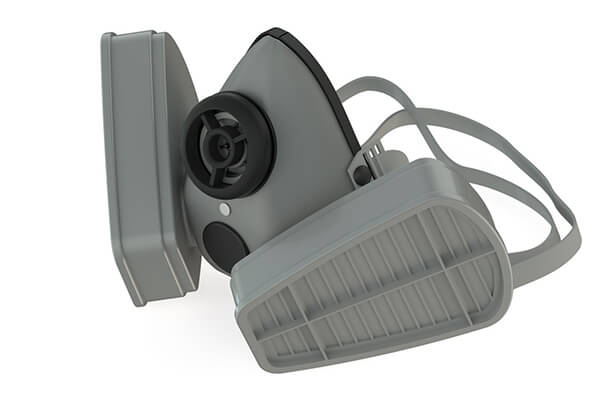
3. Polyethylene (PE)
Polyethylene, also known as polythene, is a plastic polymer composed of linear monomeric ethylene arranged in high or low densities. This thermoplastic material holds a prominent position as a medical-grade plastic owing to its exceptional impact resistance, corrosion resistance, low moisture absorption, affordability, and robust structural integrity even with frequent sterilization cycles.
In the medical field, polyethylene finds wide application in the production of medical implants due to its biocompatibility and ability to remain stable within the body over time without decomposition. Moreover, healthcare professionals can subject these components to diverse sterilization techniques and highly concentrated cleaning agents without compromising their integrity.
4. Polyvinyl chloride (PVC)
PVC, available in various forms, finds essential application in the medical plastic product manufacturing industry. The two primary forms of PVC utilized are flexible and rigid PVC. These thermoplastic grades possess high thermal stability, corrosion resistance, and flame-retardant properties, making them widely favored among medical professionals.
Flexible PVC, known for its density, affordability, and easy accessibility, is commonly used in areas where maintaining sterility is of utmost importance. On the other hand, rigid PVC offers durability, strength, and rigidity. Both types of PVC are well-suited for the production of medical devices used in cardiac catheters, feeding tubes, hemodialysis, artificial limb materials, as well as infusion bags for nutrients and dialysis fluids.
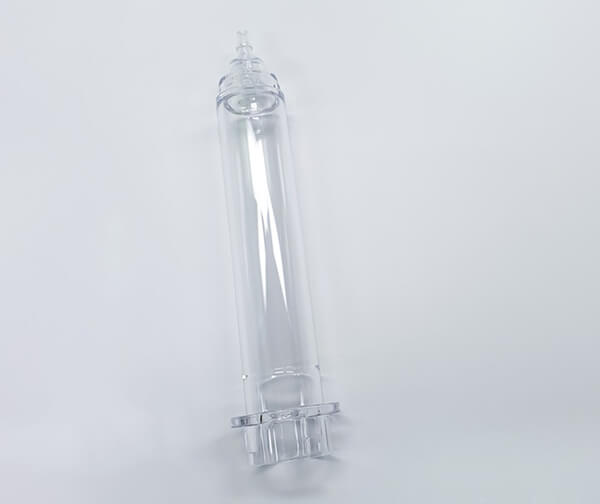
5. Acrylonitrile Butadiene Styrene (ABS)
ABS plastic, short for Acrylonitrile Butadiene Styrene, is a thermoplastic copolymer renowned for its ability to replace metal components in medical devices effectively. It exhibits rigidity, durability, and an aesthetically pleasing appearance, making it an ideal choice for the medical industry, especially considering its ease of coloration.
Moreover, ABS plastic demonstrates excellent resistance to medical sterilization techniques such as gamma radiation or chemical sterilants like ethylene oxide (EO). Therefore, ABS plastic sheets are highly suitable for manufacturing tracheal tubes, tendon prostheses, non-absorbable sutures, and various drug delivery systems.
6. Polystyrene (PS)
Thanks to its ease of sterilization, PS, this particular plastic material finds extensive use in diverse medical applications. Its impressive optical properties make it well-suited for the production of various medical components, such as test kit casings, tissue culture trays, test tubes, diagnostic tools, Petri dishes, and other medical devices.
7. Polyethylene Terephthalate Glycol (PETG)
PETG, a thermoplastic polymer, is extensively employed in medical applications due to its transparent nature, durability, machinability, and specific properties. It is particularly well-suited for medical use because it can withstand sterilization procedures, including exposure to radiation and liquid chemicals, without experiencing any fade or deterioration.
Additionally, PETG finds application in the manufacturing of food containers, making it an excellent choice for plastic containers used in the food preparation areas of hospitals and clinics. In certain hospital settings, PETG sterilization trays may also be utilized.
8. Polymethyl Methacrylate (PMMA)
Polymethyl methacrylate (PMMA), commonly known as acrylic glass, is a polymer derived from methyl methacrylate. This plastic material possesses unique properties similar to glass, such as rigidity, toughness, durability, UV light resistance, and weatherproofing. Moreover, it exhibits a high level of chemical resistance, a highly sought-after feature for many manufacturers of medical components.
Due to its ability to reflect and transmit beams of light, PMMA is an ideal choice for creating endoscopic implants. This inherent characteristic allows for optimal visualization during medical procedures, contributing to the effectiveness and success of endoscopic interventions.
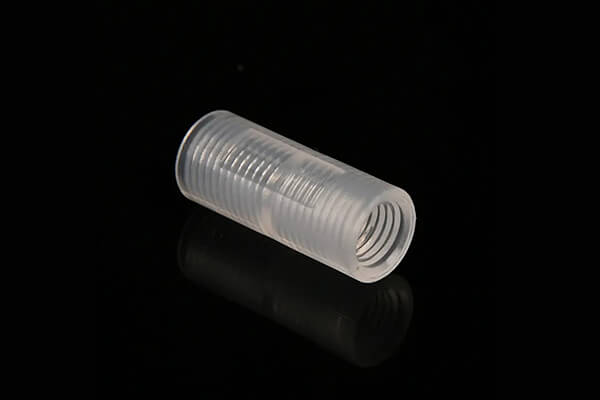
9. Polyamide (PA)
Polyamide, also referred to as nylon, is a polymer created by linking the amino group of one molecule to the carboxylic group of another, which can occur naturally or synthetically. This material is renowned for its exceptional flexibility, tensile strength, high resistance to abrasion and chemical, and anti-corrosive properties.
Polyamide can be machined through various methods such as CNC machining, injection molding, and 3D printing. Moreover, its properties, including tensile strength, can be further enhanced by combining it with other materials. Polyamide finds wide application in the medical industry, with examples of its use including prescription bottles and stent delivery systems.
10. Polytetrafluoroethylene (PTFE)
This thermoplastic polymer is known for its biocompatibility, which means it does not react with living tissues or cause adverse effects when used in medical devices or implants. This property makes it safe for long-term contact with the human body. Additionally, PTFE exhibits remarkable chemical resistance, allowing it to withstand exposure to corrosive materials and harsh chemicals commonly found in medical settings. This resistance ensures the integrity and reliability of medical devices and implants over time.
In the medical sector, PTFE is commonly used in the production of implants such as vascular grafts, hernia meshes, and sutures. PTFE is also employed in catheters and tubes due to its low friction, non-stick, and chemical resistance properties. The ease of insertion and navigability provided by PTFE-based catheters significantly enhance patient comfort and safety during medical procedures. Additionally, PTFE coatings can be applied to medical devices and instruments to enhance their performance. These coatings help reduce friction, ensuring smooth movements and precise control during surgeries.
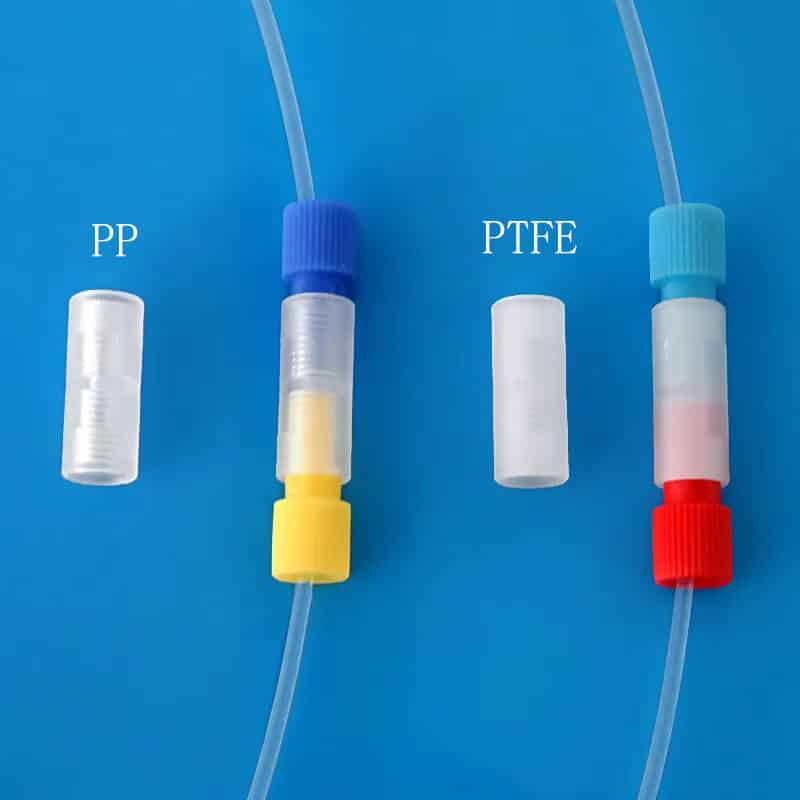
11. Polyurethane (PU)
PU offers excellent biocompatibility, making it safe for use in medical devices and implants that come into contact with the human body. It does not cause adverse reactions or tissue irritation, making it a reliable material for long-term medical applications. Additionally, PU is highly resistant to abrasion, chemicals, and solvents, ensuring the durability and longevity of medical devices in demanding healthcare environments. Its resistance to moisture and fluids also makes it suitable for applications where sterilization and cleanliness are crucial.
PU is commonly used in wound dressings, surgical drapes, and medical films due to its moisture resistance, flexibility, and comfort. PU can provide a protective barrier while allowing airflow and moisture vapor transmission, promoting optimal wound healing conditions. In medical tubing and catheters, the flexibility and biocompatibility of PU contribute to enhanced patient comfort and ease of use. PU is also used in applications such as medical adhesives, sealants, and coatings, where its excellent bonding capabilities and resistance to bodily fluids are essential. Moreover, PU can be formulated with antimicrobial agents to provide additional protection against infection in medical settings.
Benefits of Plastic Polymers for Medical Parts Manufacturing
The healthcare industry is experiencing a transformation with the introduction of medical plastic products. The increasing prevalence of polymers in medical devices has led to a significant shift in the market, with plastic steadily replacing traditional materials like glass, ceramics, and metals in various applications. While medical grade polymers can have different compositions, they share certain characteristics, properties, and adherence to regulatory standards.
Here are a few reasons why manufacturers often favor plastic polymers over metals:
Excellent properties
Medical components made from plastic polymers offer outstanding durability, strength, chemical resistance, and heat resistance, making them well-suited for applications requiring frequent sterilization. Certain plastic polymers even show hardness and tensile strength comparable to metals. Nylon, for instance, boasts an impressive tensile strength of 12,400 psi. Also, plastics are affordable, making them a better alternative to metals in manufacturing components for medical devices.
Enhancing quality of life
The use of medical plastic parts has significantly enhanced the quality of life for numerous patients. A prime example is the development of prostheses using medical plastics, which have greatly improved the comfort and enjoyment of life for amputees. Through techniques like injection molding, manufacturers are now able to create lightweight and long-lasting prosthetics using appropriate plastic grades. These advancements have greatly contributed to enhancing mobility, independence, and the ability to partake in everyday activities for individuals relying on prosthetic devices.
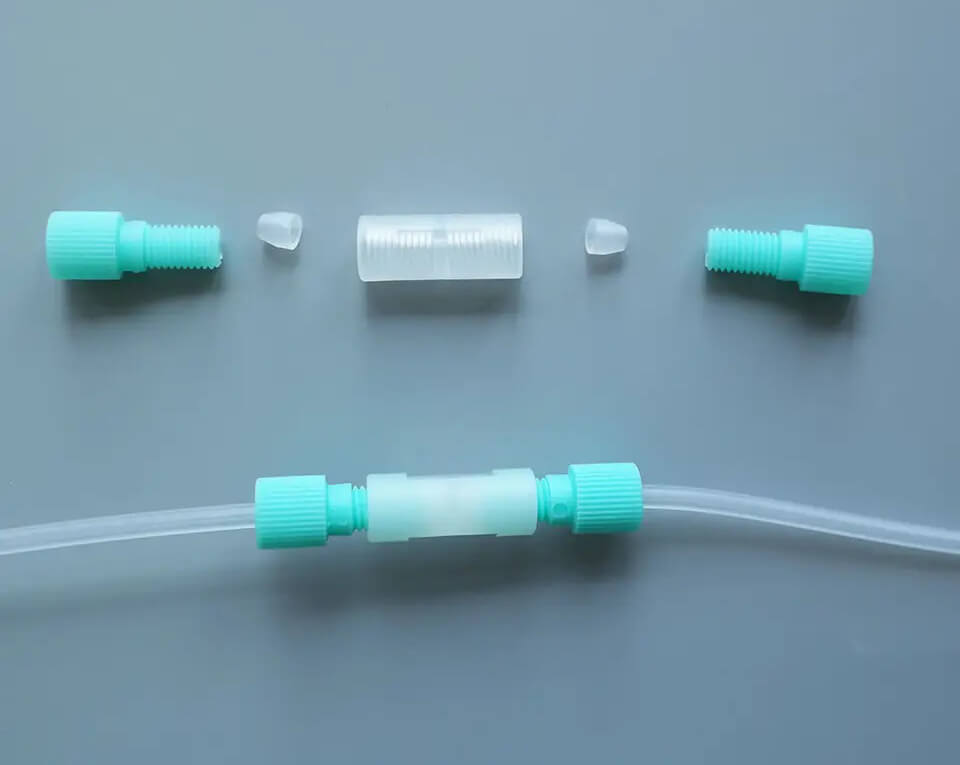
Safeguarding health
Medical plastics provide an exceptional solution for the safe transportation and transfer of biohazardous materials due to their non-permeability and durability. This ensures that medical wastes can be effectively contained, preventing the exposure of hazardous organisms to the environment. Additionally, medical plastics are utilized in the production of tamper-proof caps for pharmaceutical containers, enhancing patient safety by ensuring the integrity and security of medication packaging.
Sustainability & Affordability
Thermoplastics offer recyclability as they can be melted and reshaped multiple times. This means that any unused or excess parts generated during the manufacturing process can be effectively repurposed, minimizing material waste and enhancing cost-effectiveness.
Machinability & Versatility
Plastic polymers exhibit excellent machinability and compatibility with various manufacturing processes. Common manufacturing methods include injection molding or 3D printing, blow molding, and CNC machining depending on the desired outcome. These processes enable mass production while maintaining high levels of accuracy and precision.
Design Process Enhancement: Key Tips for Success
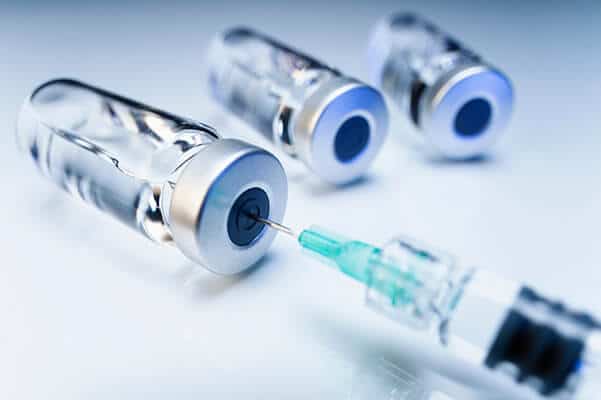
Apart from material selection, improper design may also lead to the occurrence of failures in medical plastics. Not only should a product be designed with its intended function in mind, but careful consideration must also be given to the specific properties of the chosen polymer.
Designing plastic components does not adhere to absolute rules, as design criteria vary depending on the polymer and application being used. Since different materials function differently, manufacturers approach the design process with great consideration for the composition of the product.
During the initial stages of the design process, there are several factors that should be taken into account to save time and money during production. While this list is not exhaustive, it will provide guidance in the right direction:
1. Maintain a uniform wall thickness
Maintaining a uniform wall thickness is an essential aspect to consider in plastic design. Uneven wall thickness can impede material flow and significantly increase the risk of sink marks, warpage, voids, and molded-in stress. In instances where wall thickness variation is necessary, it’s advisable to incorporate smooth transitions that gradually taper over a certain distance. The minimum allowable wall thickness for your plastic injection component will depend on factors such as part size and material flow.
2. Add radii to sharp corners
Sharp corners in the design of plastic parts are a big contributor to part failure. Sharp edges, particularly in corners like those found in square holes, tend to create high levels of molded-in stresses, compromising the toughness and strength of the part. By incorporating radii into these sharp corners, the stress distribution can be more evenly dispersed. Ideally, the corner radii should be made as large as possible to facilitate material flow and enhance the distribution of strength.
3. Proper gate location
The gate location can greatly impact the success or failure of a part design. Unfortunately, many CAD designers tend to delegate this detail to the mold designer, which can be a significant oversight. Selecting an improper gate size and type, as well as an unfavorable gate location, often leads to various molding challenges.
When dealing with a part that possesses both thick and thin areas, it’s essential to position the gate in the thick regions. This allows the resin to flow through the thicker sections while retaining sufficient heat to continue filling the adjacent thinner areas. The placement of the gate determines the occurrence of weld lines, sink marks or voids, and the extent of part warping, as it directly influences where the molten plastic enters the part cavity.
4. Draft angles for smoother mold release
The draft is an important design consideration that involves inclining vertical walls to facilitate the smooth release of a part from a mold. By incorporating draft angles, friction between the finished, cooled part and the mold surfaces is significantly reduced. Neglecting to incorporate an adequate draft can make it extremely challenging to remove plastic parts from the mold, potentially leading to complications during production.
5. Ribs and supports for higher strength
Ribs serve as an effective method to enhance the strength and rigidity of molded parts while minimizing material usage. It’s important to ensure that the thickness of the ribs does not surpass the wall thickness of the part. Thick or excessive rib dimensions can lead to sink marks or difficulties in proper filling during the molding process. A practical solution to mitigate these issues is to use multiple ribs that are thinner or shorter in size. Furthermore, features such as gussets and bosses can be employed in conjunction with ribs to further optimize structural support.
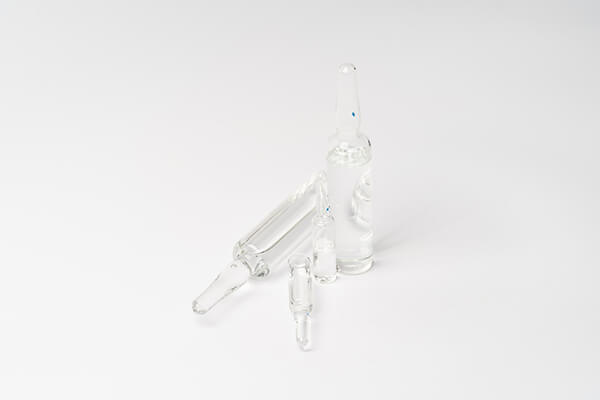
Tips for Optimizing Manufacturing Processes
The manufacturing process is crucial when it comes to preventing plastic failure. Even the best plastic designs with good material selection can fail due to a disregard for processing procedures and guidelines provided by material manufacturers. This is often driven by the need to achieve reduced cycle times, higher production yield, or better-looking parts.
1. Material processing
To prevent plastic failures, it is imperative to recognize the significance of the manufacturing process. Even well-designed plastic components with appropriate material selection can experience failures if processing procedures and guidelines provided by material manufacturers are disregarded. Often, the desire to achieve objectives such as shortened cycle times, increased production yield, or enhanced aesthetics can lead to compromises in the manufacturing process. However, adhering to proper processing procedures and guidelines is crucial for ensuring the quality and reliability of plastic parts.
2. Drying resin
In order to achieve optimal polymer performance, it’s vital to dry the resin prior to processing to eliminate moisture. Virtually all polymers have the ability to absorb moisture, and the level of absorption depends on the polymer’s chemistry and the prevailing atmospheric conditions. While desiccant dryers are commonly utilized, there are also other drying options available, such as hot-air dryers, vacuum dryers, and compressed-air dryers. Polymer manufacturers provide detailed recommendations for drying parameters including temperature, drying times, and the acceptable moisture content (dew point) of the air supplied to the dryer.
3. Material testing
While drying certain materials is primarily done for surface appearance optimization, many polymers are susceptible to irreversible structural damage caused by hydrolysis. Hydrolysis involves a chemical reaction that breaks long polymer chains down into shorter fragments, leading to a decrease in strength and other essential properties. When evaluating the physical characteristics of a molded part, visual inspections alone are unreliable. Some molded parts with subpar surface aesthetics may be structurally robust, while others may appear fine externally but exhibit weak structures and concentrated areas of molded-in stress. To ensure the molded part’s performance without any failures or concerns, it is crucial to subject it to rigorous testing under precise conditions that reflect its intended use.
4. Other factors
Optimizing various factors such as mold temperature, fill balance, fill time, injection pressure, and cavity pressure is essential in the manufacturing process to safeguard the product against potential flaws that may arise during production, which could ultimately result in different types of failures. It’s advisable to take into account the availability of on-site assistance for molding trials and production runs when choosing a materials supplier. This level of support can prove invaluable in ensuring the success of the manufacturing process and minimizing the risk of any issues or failures.
Know Application Requirements for Preventing Plastics Failure
While rough handling and misuse can certainly contribute to the premature failure of parts, failures more commonly occur due to a lack of full comprehension regarding the specific requirements of the end-use application. For instance, the actual load placed on the part may exceed the anticipated load, or the disinfection and sterilization protocols may not be compatible with the chosen material, leading to polymer degradation.
One of the primary factors contributing to plastic failure in healthcare settings is environmental stress cracking. To combat hospital-acquired infections (HAIs), hospitals and healthcare providers have adopted the use of stronger disinfectants, often applying them more vigorously.
This shift has resulted in a widespread issue concerning the cracking of medical equipment housings within a few months of being used in healthcare environments. The subsequent recalls and repairs can be costly, both in terms of equipment downtime and financial resources.
Only a limited number of specialized polymers designed for healthcare applications possess the necessary chemical resistance to withstand these new disinfection procedures.
Mitigating Environmental Stress Cracking
Environmental stress cracking (ESC) poses a significant risk to plastics used in healthcare applications. ESC occurs when stressed plastics react with chemicals, resulting in the formation of thin cracks known as crazing. To address ESC, it is crucial to understand and anticipate potential misuse scenarios of plastic parts, such as using different disinfectants or exceeding intended uses. Evaluating chemical compatibility involves considering factors like reagent type, concentration, exposure temperature, and applied stress.
Stress can originate from external loads during use or residual internal stress from processing or part geometry. Careful evaluation should account for how stress and reagent interactions may contribute to cracking. While ASTM D543 provides a standardized test method to assess the resistance of plastics to chemical reagents, it should be used as a screening tool rather than a substitute for testing materials under realistic design criteria and conditions that simulate the intended use. Comprehensive testing remains essential to ensure the durability and performance of plastic components in healthcare environments.
Conclusion
Medical plastics are now widely used in healthcare settings due to their importance in preventing the transmission of diseases and managing biomedical waste. These medical-grade plastics are highly valued for their ability to provide specific functional properties and benefits, making them essential for the fabrication of medical plastic parts in various medical applications.
Work with Runsom Precision to Get Your Medical-Grade Plastic Parts
The increasing applications and advantages of medical plastics have led to their widespread use in various healthcare sectors. However, it’s crucial for manufacturers to carefully evaluate the suitability of each medical polymer before producing plastic parts. Additionally, high-quality plastic machining plays a vital role in the manufacturing of medical supplies.
At Runsom Precision, we specialize in providing exceptional plastic CNC machining services for medical-grade plastic parts. Our team of experienced professionals is dedicated to fabricating a wide range of industrial plastic parts. We prioritize delivering high-quality medical components that meet your specific requirements. Simply upload your CAD files, and our team will provide you with an instant quote!
Other Articles You May Be Interested in:

